The Offshore Wind Energy Market is expected to grow from USD 43.01 billion in 2020 to USD 106.49 billion by 2028, at a CAGR of 12% during the forecast period 2021-2028.
The installation of wind farms in bodies of water is known as offshore wind power or offshore wind energy. Because offshore wind speeds are more excellent than on land, offshore farms generate more power per unit of capacity installed. Offshore wind energy generation is a renewable energy source that makes use of the wind's power generated on the open seas, where it flows at a considerably greater and more constant speed than on land owing to the lack of numerous obstacles. Unlike how the word "offshore" is commonly used in the marine sector, offshore wind power encompasses both inshore and deeper-water regions, such as lakes, fjords, and protected coastal areas. In relatively shallow water, most offshore wind farms use fixed-foundation wind turbines.
Stringent emission standards and restrictions imposed by governments and policymakers on the burning of conventional fuels will boost the market growth. Increasing public awareness of the need to replace existing conventional power generating technologies that use a significant amount of fossil fuels and emit pollutants into the environment is forecasted to boost the Offshore Wind Energy Market ahead. Market development is expected to be positively impacted by a favorable regulatory tendency toward efficient extraction of energy sources as well as sustained growth. Because of rising power demand and the continuous shift to renewable energy technologies, the Offshore Wind Energy Market is likely to develop significantly. Furthermore, fewer human interventions, minimal land use, and inexpensive maintenance are all factors that contribute to a beneficial outcome for offshore wind energy development. However, the transportation of big and heavy equipment to offshore locations, resulting in high costs for offshore wind power installations, is likely to hinder the Offshore Wind Energy Market growth.
This study delivers a comprehensive analysis of components, water depth, and region. The component segment includes turbine, substructure, electrical infrastructure, and others. The turbine segment is further divided into rotors and blades, nacelle, and tower. The substructure segment is further divided into jacket, monopile, gravity based, and others. The turbine segment held the largest market share, owing to rapid technical advancements in the fields of aerodynamics and material formulation, as well as industry re-structuring throughout the power sectors. The water depth segment includes shallow water, transitional water, deep water. The shallow water segment held the largest market share because of the easiness of installation and affordable initial investment.
The market has been divided into North America, Europe, Asia-Pacific, Middle East & Africa, and South America. Europe dominated the market and held the largest market share in the year 2020, owing to the growing occurrence of shallow water areas and government funding. In 2021, the UK will begin construction on the Dogger Bank Wind Farm in three phases. Countries are attempting to minimize their reliance on fossil fuels for energy production by expanding the proportion of renewable energy generation mix. Contracts for Difference were implemented by the United Kingdom government to provide consistent long-term profits from electrical infrastructure projects, lowering market entry barriers for sector players. The reform also includes provisions for establishing a feasible return on investment as well as encouraging finance via leveraging schemes.
Some of the notable players in the market are Alstom Energy, Areva Wind, Clipper Wind Power, China Ming Yang Wind Power, Dong Energy, Enercon GmbH, Doosan Heavy Industries, Equinor, Gamesa Corporacion Technologica S.A., GE Wind Energy, Guodian United Power Technology Company Ltd, Northland Power, Nordex S.E., Siemens Wind Power, Sinovel, Suzlon Group, Upwind Solutions Inc., Vestas Wind Systems A/S, and Xinjiang Goldwind Science & Technologies Co. Ltd, among others.
Offshore Wind Energy Market Analysis and Forecast, Component
Offshore Wind Energy Market Analysis and Forecast, Water Depth
Offshore Wind Energy Market Analysis and Forecast, Region
Report Description:
1. Introduction
1.1. Objectives of the Study
1.2. Market Definition
1.3. Research Scope
1.4. Currency
1.5. Key Target Audience
2. Research Methodology and Assumptions
3. Executive Summary
4. Premium Insights
4.1. Porter’s Five Forces Analysis
4.2. Value Chain Analysis
4.3. Top Investment Pockets
4.3.1. Market Attractiveness Analysis By Component
4.3.2. Market Attractiveness Analysis By Water Depth
4.3.3. Market Attractiveness Analysis By Region
4.4. Industry Trends
5. Market Dynamics
5.1. Market Evaluation
5.2. Drivers
5.2.1. Increasing investments to develop clean energy
5.2.2. Economic surge with high focus on emission reduction
5.2.3. Increasing competition between top players
5.3. Restraints
5.3.1. High capital costs
5.3.2. Availability of auxiliary electricity generation sources
6. Global Offshore Wind Energy Market Analysis and Forecast, By Component
6.1. Segment Overview
6.2. Turbine
6.2.1. Rotors and Blades
6.2.2. Nacelle
6.2.3. Tower
6.3. Substructure
6.3.1. Jacket
6.3.2. Monopile
6.3.3. Gravity Based
6.4. Electrical Infrastructure
7. Global Offshore Wind Energy Market Analysis and Forecast, By Water Depth
7.1. Segment Overview
7.2. Shallow Water
7.3. Transitional Water
7.4. Deep Water
8. Global Offshore Wind Energy Market Analysis and Forecast, By Regional Analysis
8.1. Segment Overview
8.2. North America
8.2.1. U.S.
8.2.2. Canada
8.2.3. Mexico
8.3. Europe
8.3.1. Germany
8.3.2. France
8.3.3. U.K.
8.3.4. Italy
8.3.5. Spain
8.4. Asia-Pacific
8.4.1. Japan
8.4.2. China
8.4.3. India
8.5. South America
8.5.1. Brazil
8.6. Middle East and Africa
8.6.1. UAE
8.6.2. South Africa
9. Global Offshore Wind Energy Market-Competitive Landscape
9.1. Overview
9.2. Market Share of Key Players in Global Offshore Wind Energy Market
9.2.1. Global Company Market Share
9.2.2. North America Company Market Share
9.2.3. Europe Company Market Share
9.2.4. APAC Company Market Share
9.3. Competitive Situations and Trends
9.3.1. Product Launches and Developments
9.3.2. Partnerships, Collaborations, and Agreements
9.3.3. Mergers & Acquisitions
9.3.4. Expansions
10. Company Profiles
10.1. Alstom Energy
10.1.1. Business Overview
10.1.2. Company Snapshot
10.1.3. Company Market Share Analysis
10.1.4. Company Product Portfolio
10.1.5. Recent Developments
10.1.6. SWOT Analysis
10.2. Areva Wind
10.2.1. Business Overview
10.2.2. Company Snapshot
10.2.3. Company Market Share Analysis
10.2.4. Company Product Portfolio
10.2.5. Recent Developments
10.2.6. SWOT Analysis
10.3. Clipper Wind Power
10.3.1. Business Overview
10.3.2. Company Snapshot
10.3.3. Company Market Share Analysis
10.3.4. Company Product Portfolio
10.3.5. Recent Developments
10.3.6. SWOT Analysis
10.4. China Ming Yang Wind Power
10.4.1. Business Overview
10.4.2. Company Snapshot
10.4.3. Company Market Share Analysis
10.4.4. Company Product Portfolio
10.4.5. Recent Developments
10.4.6. SWOT Analysis
10.5. Dong Energy
10.5.1. Business Overview
10.5.2. Company Snapshot
10.5.3. Company Market Share Analysis
10.5.4. Company Product Portfolio
10.5.5. Recent Developments
10.5.6. SWOT Analysis
10.6. Enercon GmbH
10.6.1. Business Overview
10.6.2. Company Snapshot
10.6.3. Company Market Share Analysis
10.6.4. Company Product Portfolio
10.6.5. Recent Developments
10.6.6. SWOT Analysis
10.7. Doosan Heavy Industries
10.7.1. Business Overview
10.7.2. Company Snapshot
10.7.3. Company Market Share Analysis
10.7.4. Company Product Portfolio
10.7.5. Recent Developments
10.7.6. SWOT Analysis
10.8. Equinor
10.8.1. Business Overview
10.8.2. Company Snapshot
10.8.3. Company Market Share Analysis
10.8.4. Company Product Portfolio
10.8.5. Recent Developments
10.8.6. SWOT Analysis
10.9. Gamesa Corporacion Technologica S.A.
10.9.1. Business Overview
10.9.2. Company Snapshot
10.9.3. Company Market Share Analysis
10.9.4. Company Product Portfolio
10.9.5. Recent Developments
10.9.6. SWOT Analysis
10.10. Northland Power
10.10.1. Business Overview
10.10.2. Company Snapshot
10.10.3. Company Market Share Analysis
10.10.4. Company Product Portfolio
10.10.5. Recent Developments
10.10.6. SWOT Analysis
10.11. Nordex S.E.
10.11.1. Business Overview
10.11.2. Company Snapshot
10.11.3. Company Market Share Analysis
10.11.4. Company Product Portfolio
10.11.5. Recent Developments
10.11.6. SWOT Analysis
10.12. Siemens Wind Power
10.12.1. Business Overview
10.12.2. Company Snapshot
10.12.3. Company Market Share Analysis
10.12.4. Company Product Portfolio
10.12.5. Recent Developments
10.12.6. SWOT Analysis
10.13. Sinovel
10.13.1. Business Overview
10.13.2. Company Snapshot
10.13.3. Company Market Share Analysis
10.13.4. Company Product Portfolio
10.13.5. Recent Developments
10.13.6. SWOT Analysis
10.14. Suzlon Group
10.14.1. Business Overview
10.14.2. Company Snapshot
10.14.3. Company Market Share Analysis
10.14.4. Company Product Portfolio
10.14.5. Recent Developments
10.14.6. SWOT Analysis
10.15. Upwind Solutions Inc.
10.15.1. Business Overview
10.15.2. Company Snapshot
10.15.3. Company Market Share Analysis
10.15.4. Company Product Portfolio
10.15.5. Recent Developments
10.15.6. SWOT Analysis
10.16. Vestas Wind Systems A/S
10.16.1. Business Overview
10.16.2. Company Snapshot
10.16.3. Company Market Share Analysis
10.16.4. Company Product Portfolio
10.16.5. Recent Developments
10.16.6. SWOT Analysis
10.17. Xinjiang Goldwind Science & Technologies Co. Ltd
10.17.1. Business Overview
10.17.2. Company Snapshot
10.17.3. Company Market Share Analysis
10.17.4. Company Product Portfolio
10.17.5. Recent Developments
10.17.6. SWOT Analysis
List of Table
1. Global Offshore Wind Energy Market, By Component, 2018-2028 (USD Billion)
2. Global Turbine, Offshore Wind Energy Market, By Region, 2018-2028 (USD Billion)
3. Global Rotors and Blades, Offshore Wind Energy Market, By Region, 2018-2028 (USD Billion)
4. Global Nacelle, Offshore Wind Energy Market, By Region, 2018-2028 (USD Billion)
5. Global Tower, Offshore Wind Energy Market, By Region, 2018-2028 (USD Billion)
6. Global Substructure, Offshore Wind Energy Market, By Region, 2018-2028 (USD Billion)
7. Global Jacket, Offshore Wind Energy Market, By Region, 2018-2028 (USD Billion)
8. Global Monopile, Offshore Wind Energy Market, By Region, 2018-2028 (USD Billion)
9. Global Gravity Based, Offshore Wind Energy Market, By Region, 2018-2028 (USD Billion)
10. Global Electrical Infrastructure, Offshore Wind Energy Market, By Region, 2018-2028 (USD Billion)
11. Global Offshore Wind Energy Market, By Water Depth, 2018-2028 (USD Billion)
12. Global Shallow Water, Offshore Wind Energy Market, By Region, 2018-2028 (USD Billion)
13. Global Transitional Water, Offshore Wind Energy Market, By Region, 2018-2028 (USD Billion)
14. Global Deep Water, Offshore Wind Energy Market, By Region, 2018-2028 (USD Billion)
15. North America Offshore Wind Energy Market, By Component, 2018-2028 (USD Billion)
16. North America Offshore Wind Energy Market, By Water Depth, 2018-2028 (USD Billion)
17. U.S. Offshore Wind Energy Market, By Component, 2018-2028 (USD Billion)
18. U.S. Offshore Wind Energy Market, By Water Depth, 2018-2028 (USD Billion)
19. Canada Offshore Wind Energy Market, By Component, 2018-2028 (USD Billion)
20. Canada Offshore Wind Energy Market, By Water Depth, 2018-2028 (USD Billion)
21. Mexico Offshore Wind Energy Market, By Component, 2018-2028 (USD Billion)
22. Mexico Offshore Wind Energy Market, By Water Depth, 2018-2028 (USD Billion)
23. Europe Offshore Wind Energy Market, By Component, 2018-2028 (USD Billion)
24. Europe Offshore Wind Energy Market, By Water Depth, 2018-2028 (USD Billion)
25. Germany Offshore Wind Energy Market, By Component, 2018-2028 (USD Billion)
26. Germany Offshore Wind Energy Market, By Water Depth, 2018-2028 (USD Billion)
27. France Offshore Wind Energy Market, By Component, 2018-2028 (USD Billion)
28. France Offshore Wind Energy Market, By Water Depth, 2018-2028 (USD Billion)
29. U.K. Offshore Wind Energy Market, By Component, 2018-2028 (USD Billion)
30. U.K. Offshore Wind Energy Market, By Water Depth, 2018-2028 (USD Billion)
31. Italy Offshore Wind Energy Market, By Component, 2018-2028 (USD Billion)
32. Italy Offshore Wind Energy Market, By Water Depth, 2018-2028 (USD Billion)
33. Spain Offshore Wind Energy Market, By Component, 2018-2028 (USD Billion)
34. Spain Offshore Wind Energy Market, By Water Depth, 2018-2028 (USD Billion)
35. Asia Pacific Offshore Wind Energy Market, By Component, 2018-2028 (USD Billion)
36. Asia Pacific Offshore Wind Energy Market, By Water Depth, 2018-2028 (USD Billion)
37. Japan Offshore Wind Energy Market, By Component, 2018-2028 (USD Billion)
38. Japan Offshore Wind Energy Market, By Water Depth, 2018-2028 (USD Billion)
39. China Offshore Wind Energy Market, By Component, 2018-2028 (USD Billion)
40. China Offshore Wind Energy Market, By Water Depth, 2018-2028 (USD Billion)
41. India Offshore Wind Energy Market, By Component, 2018-2028 (USD Billion)
42. India Offshore Wind Energy Market, By Water Depth, 2018-2028 (USD Billion)
43. South America Offshore Wind Energy Market, By Component, 2018-2028 (USD Billion)
44. South America Offshore Wind Energy Market, By Water Depth, 2018-2028 (USD Billion)
45. Brazil Offshore Wind Energy Market, By Component, 2018-2028 (USD Billion)
46. Brazil Offshore Wind Energy Market, By Water Depth, 2018-2028 (USD Billion)
47. Middle East and Africa Offshore Wind Energy Market, By Component, 2018-2028 (USD Billion)
48. Middle East and Africa Offshore Wind Energy Market, By Water Depth, 2018-2028 (USD Billion)
49. UAE Offshore Wind Energy Market, By Component, 2018-2028 (USD Billion)
50. UAE Offshore Wind Energy Market, By Water Depth, 2018-2028 (USD Billion)
51. South Africa Offshore Wind Energy Market, By Component, 2018-2028 (USD Billion)
52. South Africa Offshore Wind Energy Market, By Water Depth, 2018-2028 (USD Billion)
List of Figures
1. Global Offshore Wind Energy Market Segmentation
2. Global Offshore Wind Energy Market: Research Methodology
3. Market Size Estimation Methodology: Bottom-Up Approach
4. Market Size Estimation Methodology: Top-Down Approach
5. Data Triangulation
6. Porter’s Five Forces Analysis
7. Value Chain Analysis
8. Global Offshore Wind Energy Market Attractiveness Analysis By Component
9. Global Offshore Wind Energy Market Attractiveness Analysis By Water Depth
10. Global Offshore Wind Energy Market Attractiveness Analysis By Region
11. Global Offshore Wind Energy Market: Dynamics
12. Global Offshore Wind Energy Market Share by Component (2021 & 2028)
13. Global Offshore Wind Energy Market Share by Water Depth (2021 & 2028)
14. Global Offshore Wind Energy Market Share by Regions (2021 & 2028)
15. Global Offshore Wind Energy Market Share by Company (2020)
Market research is a method of gathering, assessing and deducing data & information about a particular market. Market research is very crucial in these days. The techniques analyze about how a product/service can be offered to the market to its end-customers, observe the impact of that product/service based on the past customer experiences, and cater their needs and demands. Owing to the successful business ventures, accurate, relevant and thorough information is the base for all the organizations because market research report/study offers specific market related data & information about the industry growth prospects, perspective of the existing customers, and the overall market scenario prevailed in past, ongoing present and developing future. It allows the stakeholders and investors to determine the probability of a business before committing substantial resources to the venture. Market research helps in solving the marketing issues challenges that a business will most likely face.
Market research is valuable because of the following reasons:
Our research report features both the aspects; qualitative and quantitative. Qualitative part provides insights about the market driving forces, potential opportunities, customer’s demands and requirement which in turn help the companies to come up with new strategies in order to survive in the long run competition. The quantitative segment offers the most credible information related to the industry. Based on the data gathering, we use to derive the market size and estimate their future growth prospects on the basis of global, region and country.
Our market research process involves with the four specific stages.

Data Collection: This stage of the market research process involves with the gathering and collecting of the market/industry related data from the sources. There are basically two types of research methods:
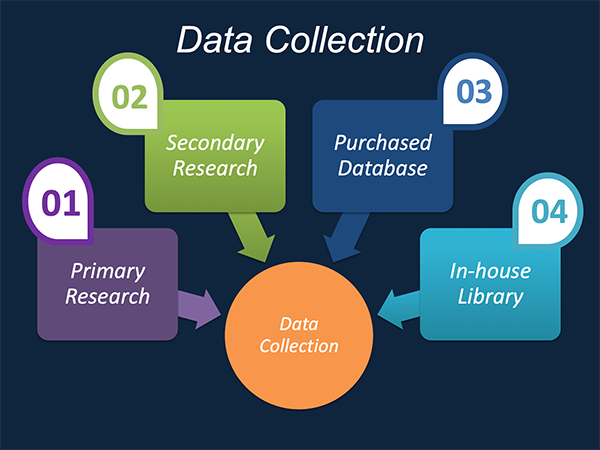
Data Synthesis: This stage includes the evaluation and assessment of all the data acquired from the primary and secondary research. It likewise includes in evaluating the information for any disparity watched while information gathering identified with the market. The data & information is gathered with consideration to the heterogeneity of sources. Scientific and statistical methods are implemented for synthesizing dissimilar information sets and provide the relevant data which is fundamental for formulating strategies. Our organization has broad involvement with information amalgamation where the information goes through different stages:


Market Formulation & Deduction: The last stage includes assigning the data & information in a suitable way in order to derive market size. Analyst reviews and domain based opinions based on holistic approach of market estimation combined with industry investigation additionally features a crucial role in this stage.
This stage includes with the finalization of the market size and numbers that we have gathered from primary and secondary research. With the data & information addition, we ensure that there is no gap in the market information. Market trend analysis is finished by our analysts by utilizing data extrapolation procedures, which give the most ideal figures to the market.
Data Validation: Validation is the most crucial step in the process. Validation & re-validation through scientifically designed technique and process that helps us finalize data-points to be used for final calculations. This stage also involves with the data triangulation process. Data triangulation generally implicates the cross validation and matching the data which has been collected from primary and secondary research methods.





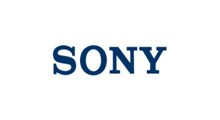

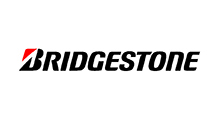

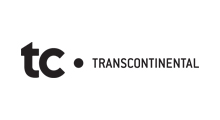















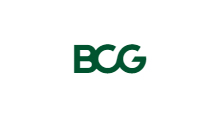




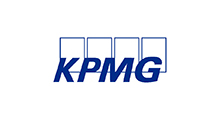
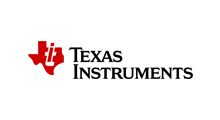



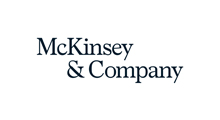

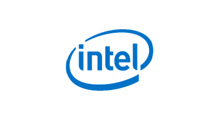







Free Customization
Countries can be added on demand
Free yearly update on purchase of Multi/Corporate User License
Companies served till date

We serve our customers 24x7 for 365 days through calls, emails and live chat options.

Huge database of exceptional market reports bringing market intelligence to your fingertips.

SSL enabled, we offer you various secured payment options for risk free purchase.